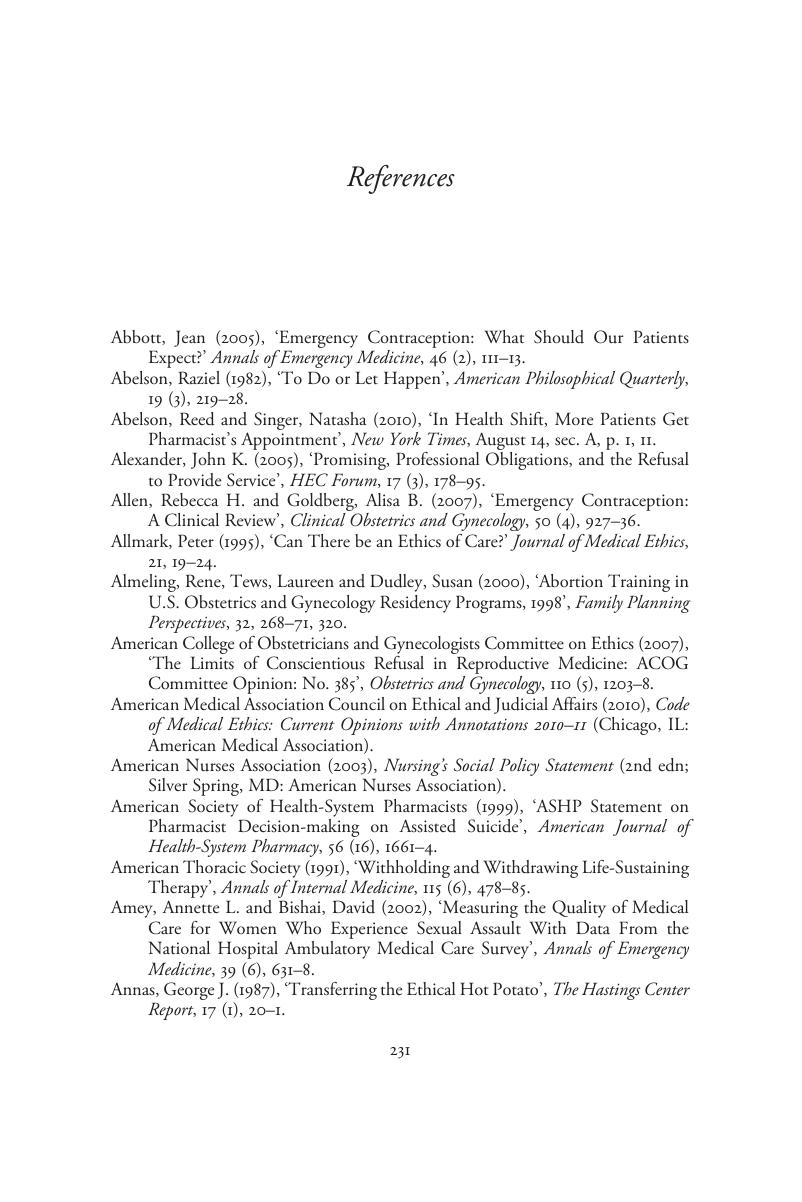Book contents
- Frontmatter
- Contents
- Preface
- 1 Introduction
- 2 Three approaches to conscientious objection in health care: conscience absolutism, the incompatibility thesis, and compromise
- 3 Ethical limitations on the exercise of conscience
- 4 Pharmacies, health care institutions, and conscientious objection
- 5 Students, residents, and conscience-based exemptions
- 6 Conscience clauses: too much and too little protection
- References
- Index
- References
References
Published online by Cambridge University Press: 05 June 2012
- Frontmatter
- Contents
- Preface
- 1 Introduction
- 2 Three approaches to conscientious objection in health care: conscience absolutism, the incompatibility thesis, and compromise
- 3 Ethical limitations on the exercise of conscience
- 4 Pharmacies, health care institutions, and conscientious objection
- 5 Students, residents, and conscience-based exemptions
- 6 Conscience clauses: too much and too little protection
- References
- Index
- References
Summary

- Type
- Chapter
- Information
- Conscientious Objection in Health CareAn Ethical Analysis, pp. 231 - 243Publisher: Cambridge University PressPrint publication year: 2011



